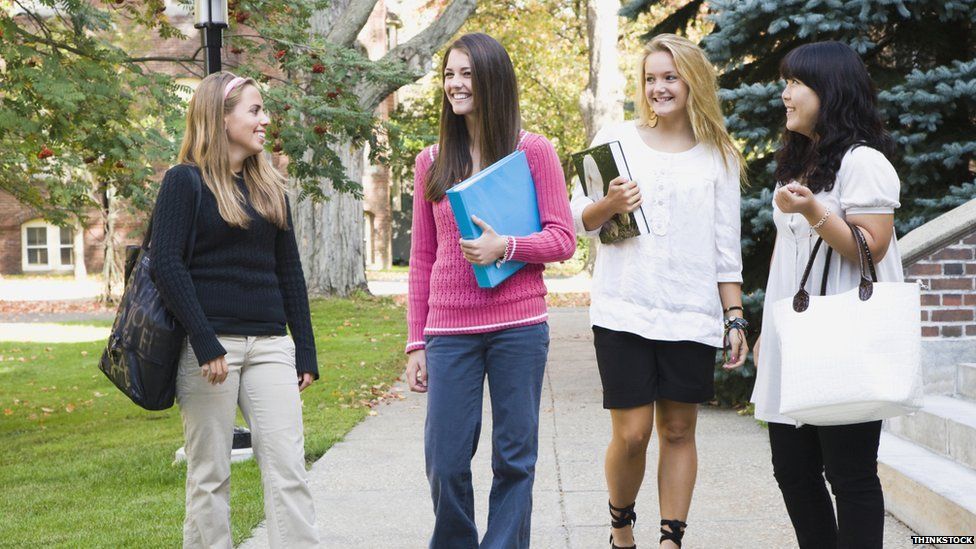A-level predictions 'boosted' to reach top universities
- Published

Teachers are bumping up students' predicted A-level grades to help them win places at top universities, the head of the admissions service claims.
Ucas head Mary Curnock Cook said universities were now "more flexible" with grade requirements, amid intense competition to attract more students.
Universities are accepting more candidates who fail to gain their predicted grades, Ucas data suggests.
There is no cap on degree place numbers at England's universities.
Last year, more than half of students accepted on to degree courses had missed their results by two or more grades, spread over three qualifications, Ms Curnock Cook said.
She added that some teachers had told her they were "over-predicting" sixth-formers' results in a bid to secure initial offers from university.
'Significant discounts'
Speaking at a conference on higher education at Wellington College, Berkshire, she said: "I talk to a lot of schools and people who advise students and, in the past, I would have said, 'Surely you wouldn't be over-predicting your students on purpose?', and actually just this last summer really, I had teachers coming back to me and saying, 'Actually, yes we would.'
"I'll show you why, because actually, accepted applicants, the number who are being accepted with quite significant discounts on their offers and their predicted grades, has grown quite a lot - 52% of A-level accepts have missed their grades by two or more grades over the portfolio of three [A-levels]."
Ucas figures show a nine percentage point rise since 2010 in the number of students predicted to score at least two A grades and a B at A-level, to 63% in 2015.
Over-prediction of grades had always occurred, Ms Curnock Cook said, but she indicated that it was becoming more common.
"Offers are being discounted at confirmation time, and we can see that.
"We can see that because the lifting of the number controls has increased competition amongst universities to recruit students - you can see that happening.
"For example, of the proportion accepted to higher-tariff universities, about 44% of those with BBB in their A-levels got a place at higher-tariff institutions, compared to just 20% in 2011," she added.
Best-case scenario
As universities compete for students they are being "more flexible with their entry grades", she said.
But she stressed that there had always been inaccuracies in predicted grades because they have always been used by teachers to signal what a pupil is capable of.
Association of School and College Leaders acting general secretary Malcolm Trobe agreed that predictive grades were often higher than the ones pupils achieved.
"There are a number of reasons for this, one of which is teachers are looking at the best possible outcome for the student if everything goes really, really well - if they manage to achieve their maximum grade."
He added that there were likely to be more discrepancies between predicted grades and the ones pupils achieved because of the move to linear A-levels and the scrapping of AS-levels. This was because teachers were used to having half the marks from the AS level.
Prof Michael Arthur, provost and president of University College London, said that his institution's standard offer is one A* grade and two As or three A grades, adding that last year, "we did drop down one grade for about 9% or so of students that we admitted".
Previously universities were allowed to take as many ABB students as they wished to recruit. This is the grade threshold for many sought-after courses at many leading universities.